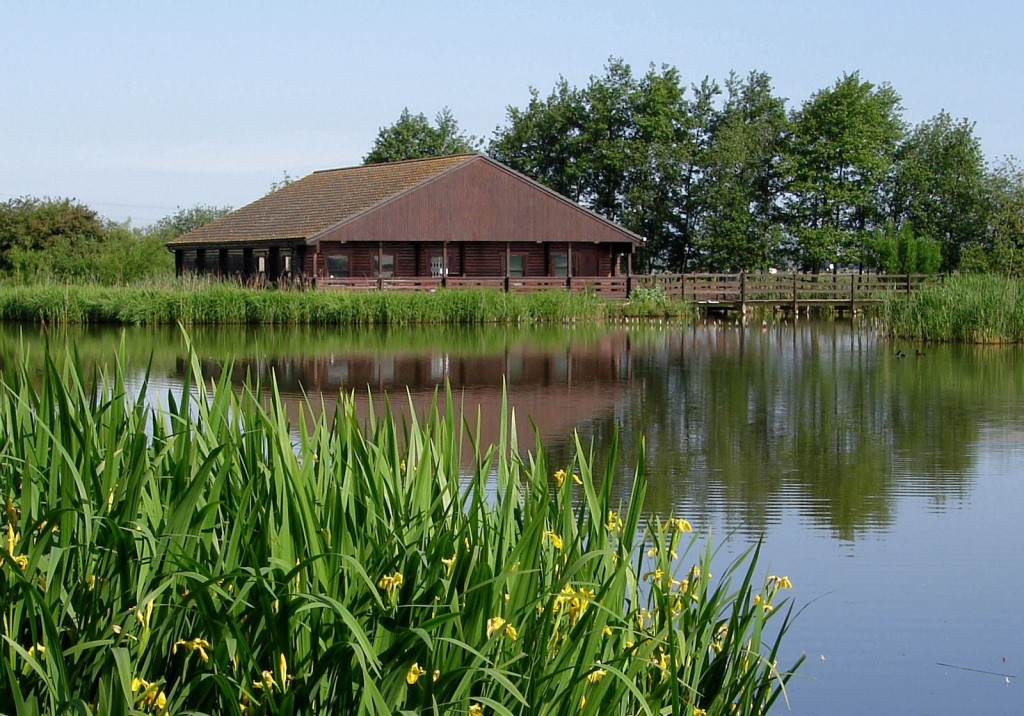On 29th February 2012, DigVentures, a social enterprise dedicated to funding sustainable archaeology projects, launched a 60 day funding round for Europe’s first ever crowdfunded and crowdsourced excavation, on the iconic Bronze Age site of Flag Fen. Project Director Brendon Wilkins explains the background.
* * *
‘The bunny huggers won’t like this,’ proclaimed Fenland District Council leader Alan Melton in June 2011, and he couldn’t have been more right. Pitting archaeologists against developers in a battle for hearts and minds, Melton declared that archaeological restrictions would be removed from future planning applications in the Cambridgeshire Fens. A media storm ensued, branded as ‘bunnygate’ in the blogosphere, eventually forcing the councilor into about-face climb-down.
 But now that the dust has settled on the Fenland furore, the unpalatable truth is that the man Private Eye named ‘Philistine of the Year’ may be more in tune with the times than we would like to believe.
But now that the dust has settled on the Fenland furore, the unpalatable truth is that the man Private Eye named ‘Philistine of the Year’ may be more in tune with the times than we would like to believe.
The National Planning Framework looms large on the horizon, threatening to weaken Historic Environment protection by coming directly into conflict with that other flagship coalition policy – localism. Capacity to implement the proposed changes to the planning system has been hollowed out from within by an 11% cut in frontline local authority archaeology posts. Add to this the withdrawal of grant-in-aid for the Council for British Archaeology and English Heritage, not to mention the tripling of university fees for entry-level archaeology qualifications (for which there is substantially decreasing market anyway), and it is clear that commercial, academic, and community archaeology funding models may not survive much longer in their current form.
The bunny huggers won the battle, but will they win the war?
Crowdfunding Archaeology
DigVentures launched their funding window on 29th February, and in the first week raised 30% of the £25,000 needed to undertake a specialist excavation and assessment of the waterlogged remains at Flag Fen. Crowdfunding is very well established in the States, and steadily growing in popularity in Europe as traditional funding streams dry up. Simply put, crowdfunding is a system of micro-patronage, using Internet payment technology like PayPal to collect small amounts of money from large amounts of people.
Crowdfunding has been most successful in creative industries such as film, music and drama, where supporters can launch projects such as films, records, exhibitions and runway shows through buying perks and rewards (such invitations to premieres, performances, or limited edition artwork) with creative and social entrepreneurs retaining commercial and artistic ownership of their project. Ideas that may not fit the pattern required by conventional financiers therefore achieve traction in the marketplace, supported by what has been called the ‘wisdom of crowds.’
The Flag Fen Lives campaign (www.digventures.com) will be the first time such an approach has been tried in archaeology in Europe, and is in fact one of the few times it has been tested anywhere in the world. Triggering publicity through Facebook, Twitter and other social media, DigVentures aims to build a community with archaeology at its heart, and give people the chance to come and dig with them at Flag Fen. The goal is twofold: to scope the archaeology, taking stock and planning a long-term research design, and also to bring the public to the site in greater numbers than ever before – which is essential, if Flag Fen is to remain open as a public facility.

Flag Fen Lives
Comprising over 60,000 Bronze Age timbers forming a ceremonial platform and walkway over 1 km in length, Flag Fen is in a steady process of decay, and time is running out. Due to extensive drainage and development of the surrounding area, the archaeology is in serious jeopardy. It is estimated that a large part of the site will be lost within the next 20 years if work is not carried out now. From 23rd July – 12th August, DigVentures will be opening the first trenches in over a decade at Flag Fen. For the first time ever, the public will be able to dig alongside the archaeologists.
A team of internationally respected archaeologists and scientists have been assembled to head up the 2012 season’s dig, with the results feeding directly into a major five-year research programme designed to make live excavation the beating pulse of Flag Fen visitor’s experience, take the site’s rich legacy in hand, and launch it into an exciting and sustainable future.
How to get involved
Starting from as low as £10, the public will be invited to join the team as funding ‘Venturers’, with a ‘backstage’ pass to the Site Hut, a password-protected area on the DigVentures.com website which will allow them to share the excitement of discovery as it happens – knowing that without their support, it wouldn’t have happened. They will be given privileged access to daily site blogs, interviews, and lectures from archaeological superstars, photos, finds and more.
The real funs starts from £125 and above, where ‘Venturers’ can roll their sleeves up and actually join in – becoming an archaeologist for a day, a week, or for the whole season. At whatever level people choose to support, they will be taking part in a groundbreaking, game-changing archaeological experiment as a key member of the team. Every ‘Venturer’ will receive a copy of the site report with their name acknowledged in the front, topped off with an invitation to the End of Site party, where the initial results will be presented.

A funding revolution?
Archaeology desperately needs to reach out to new audiences, and it has to find a way to support itself beyond complete dependence on the HLF and other donors. The Flag Fen Lives project is an explicit attempt to reconnect the paying public’s fascination with the past to our aspirations as archaeologists – to undertake thrilling and worthwhile research.
This is not a new concept in archaeology; in fact, like true revolutions, it is bringing us back to our roots as a popular patron-supported discipline. Mortimer Wheeler’s work at Maiden Castle was funded through a carefully marketed archaeological experience including tours, souvenirs and a sophisticated media strategy. Close parallels can also be seen in the ‘citizen science’ model successfully implemented by conservation organisations like Earthwatch, who have sought to democratise access to scientific research. What differs is our digital platform and use of social media – technologies that have been dubbed ‘architectures of participation’ – and early indications are that that is precisely what is happening.
Gold Standard
It is often said that archaeology has never been more popular. Against the backdrop of budget cuts and job losses, membership of the National Trust, English Heritage, and the Council for British Archaeology is reportedly growing, whilst the CM&S Select committee recently valued heritage tourism as worth £20.6 billion to the UK economy. DigVentures aim to thoroughly test the public’s appetite for archaeology, financially connecting them with the archaeologists in a binding social contract.
We are rising to Martin Carver’s challenge in Antiquity to ‘change the whole basis on which most archaeologists are paid: not to rid sites of their archaeology as cheaply and speedily as possible, but to create a past that wasn’t there before… Whatever the future brings, let’s hang on to this principle: the true currency of archaeology is knowledge; that’s our gold standard, valid everywhere.’
To extend Carver’s metaphor, DigVentures will establish a financial value for our gold standard.
* * *
Back the Flag Fen Lives Project HERE
Find out more about DigVentures HERE
Further Reading
A full evaluation of the public impact of the project and crowdfunding model will be undertaken with preliminary results presented at the EAA in Helsinki, (and peer review paper published soon after). For further reading the books, papers and articles below will give a flavour of our ongoing research.
Carver, M. 2010. Editorial. Antiquity. 84: 935-938.
Department for Communities and Local Government, 2011. Draft National Planning Policy Framework. London
Feyerband, P. 1978. Science in a Free Society. Routledge: New York.
Garrod, G. and K. Willis. 2002. Northumbria: castles, cathedrals and towns’ in Navrud, S. and Ready, R. 2002. Valuing Cultural Heritage. Edward Elgar Publishing Limited: Cheltenham, Gloucester.
Heritage Lottery Fund, 2010. Investing in Success: Heritage and the UK tourism economy. HLF & Visit Britain.
Feyerband, P. 1978. Science in a Free Society. Routledge: New York.
O’Reilly, T. 2004. The Architecture of Participation. O’Reilly Media Newsletter (available on-line: http://oreilly.com/pub/a/oreilly/tim/articles/architecture_of_participation.html).
Scanlon, K, Fernandez, M, Travers, T and Whitehead C. 2011. An economic analysis of the market for archaeological services in the planning process. In The Southport Group. 2011. Realising the benefits of planning-led investigation in the historic environment: a framework for delivery.
Schlanger, N. & K. Aitchison (ed.). 2010. Archaeology and the global economic crisis: Multiple impacts. Possible solutions. ACE/Culture Lab Editions: 107-116.
Shirky, C. 2008. Here comes everybody: the power of organising without organisations. New York: Penguin Press.
Surowiecki, J. 2005. The Wisdom of Crowds. Anchor.
Thomas, S. 2010. Community Archaeology in the UK: Recent Findings. Council for British Archaeology.
Thurley, S. 2011. Heritage Guardian: Interview with Christopher Caitling and Mathew Symonds. Current Archaeology. 259: 41-43.
Wilkins, B. (In Press). Knowledge, Value and the Celtic Tiger. In Aitcheson, K., Jameson, J. and Eogan, J. (eds.) Archaeologists of the world: globalizing archaeological practice. Springer

One comment